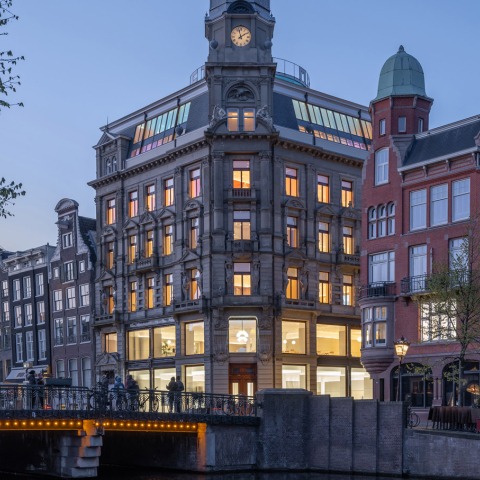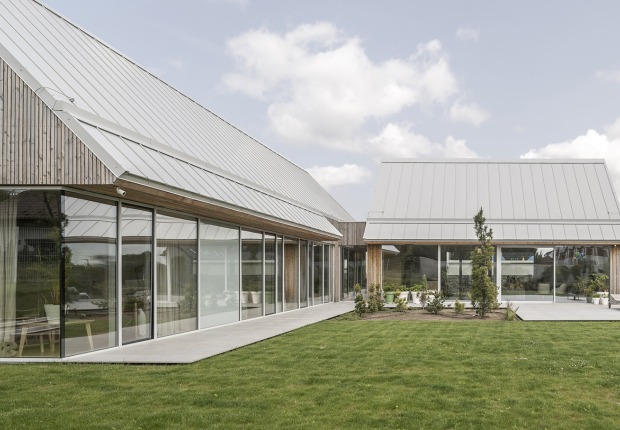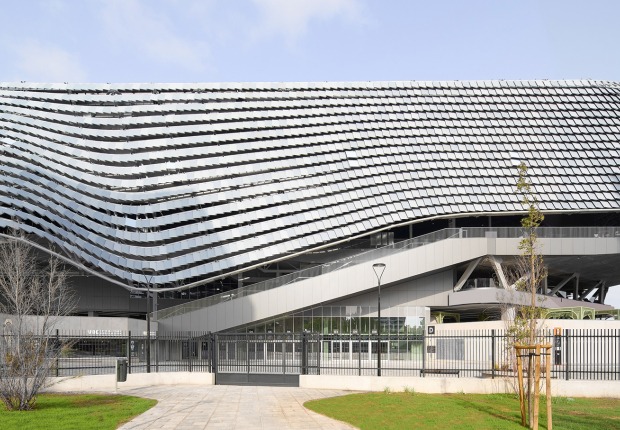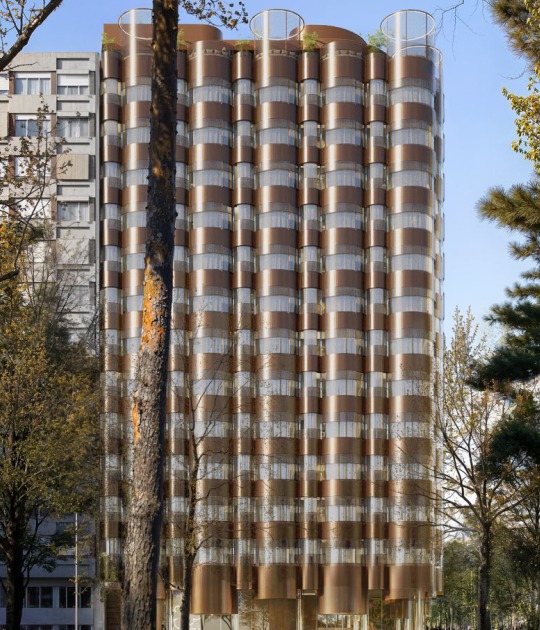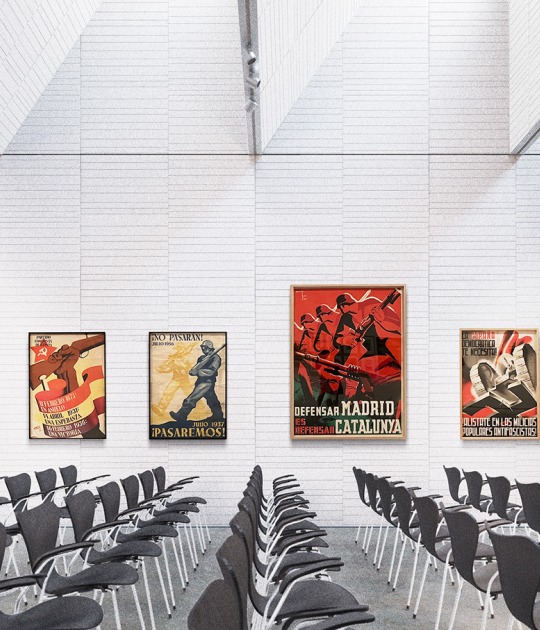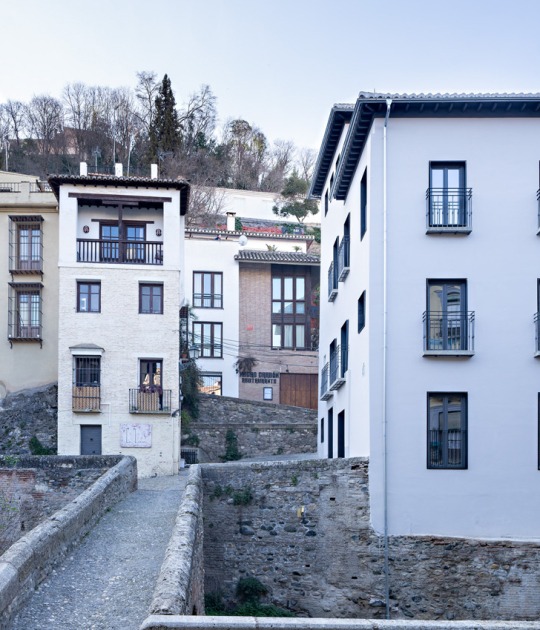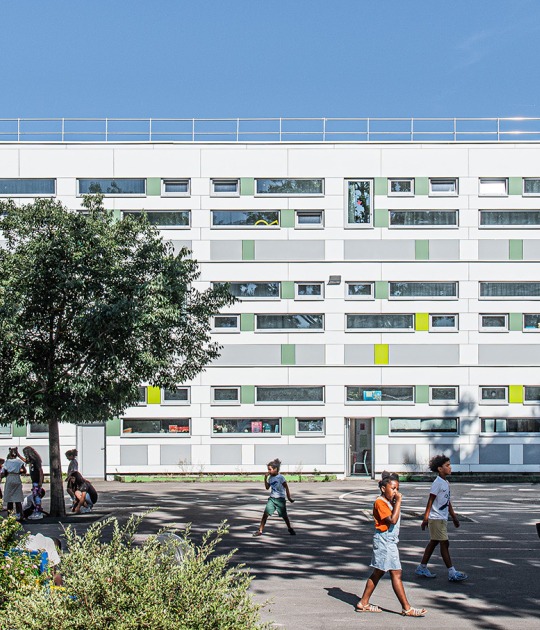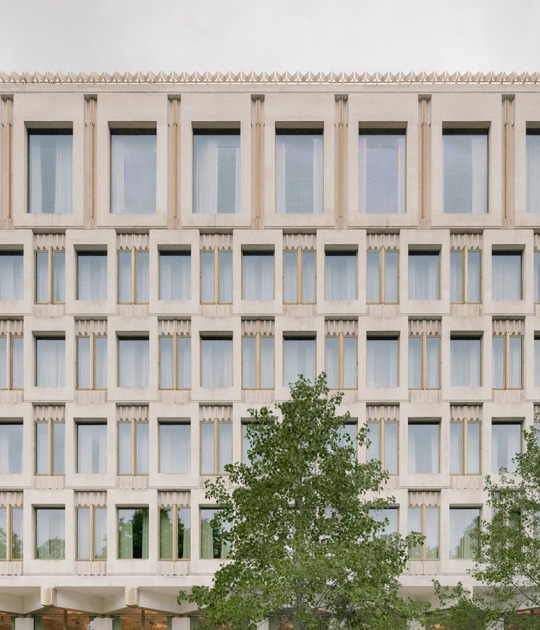Above the car showcase on the ground floor is a café including a kids’ corner; next, the second floor is home to the Forum, which local businesses and event organisations can utilise for workshops, presentations, and small-scale lectures, alongside a “Joy Camp”. The third floor features co-working spaces that can be booked and used by the public, while the fourth is home to an art and design gallery that can equally be used to show NIO products or as a platform for local artists to showcase their work. Finally – above a fifth floor reserved for NIO’s offices – are event spaces on the sixth floor and the rooftop pavilion.

NIO House Amsterdam by MVRDV. Photograph by Ossip van Duivenbode.

NIO House Amsterdam by MVRDV. Photograph by Ossip van Duivenbode.
Project description by MVRDV
Electric car manufacturer NIO has opened its flagship location in Europe, occupying a seven-storey building on Amsterdam’s Keizersgracht originally built in the late 19th century. The new NIO House Amsterdam renovates the building with an interior design by MVRDV, which combines design elements reflective of NIO’s brand with a respectful treatment of the historic building. Now offering a wide variety of spaces for relaxing, working, events, and exhibitions, the building’s floors form a colour gradient inspired by NIO’s “blue sky coming” slogan, from earthy colours on the lower floors to an airy blue that fills the building’s modernist rooftop pavilion.
The building has a storied history: designed by Jan van Looy when it was built in 1891 for the New York Life Insurance Company it was among the tallest private buildings in Amsterdam. For the majority of the 20th century, it was home to the Metz & Co department store and in 1933 was extended by a steel and glass rooftop pavilion designed by Gerrit Rietveld, arguably the most important Dutch architect of the modernist movement. Despite this heritage, in 2013 it became home to an Abercrombie & Fitch store; as a consequence, the upper floors including the Rietveld pavilion were closed to the public, and many of the original interior details were covered up.
Just as in all of their locations worldwide, the arrival of a NIO House turns the building not just into a typical “car showroom”, but a public building with a variety of functions that contribute to the neighbourhood that hosts it. Above the car showcase on the ground floor is a café including a soft yellow kids’ corner; next, the second floor is home to the Forum, which local businesses and event organisations can utilise for workshops, presentations, and small-scale lectures, alongside a “Joy Camp” where children can entertain themselves. The third floor features co-working spaces that can be booked and used by the public, while the fourth is home to an art and design gallery that can equally be used to show NIO products or as a platform for local artists to showcase their work. Finally – above a fifth floor reserved for NIO’s own offices – are event spaces on the sixth floor and the rooftop pavilion.

NIO House Amsterdam by MVRDV. Photograph by Ossip van Duivenbode.
In MVRDV’s design the staircase, with its historic details once again revealed, becomes a central element of the design, and is always visible from the main spaces on each floor to help orient visitors. Throughout the project, the space is opened as much as possible to create a light and airy environment, removing internal walls, raising ceilings, and emphasising vertical connections such as the atrium that links the ground floor with the café.
“The exciting challenge of this project was in unifying the history of this building with the identity of NIO, a company which in many senses is interested in offering a vision of the future. In a sense, we are confronting the same challenge that Rietveld resolved so gracefully 90 years ago. NIO House Amsterdam shows how the old and the new can provide a counterpoint for one another and ultimately enrich each other.”
MVRDV founding partner Jacob van Rijs.
The design team devised a palette of materials that becomes progressively cleaner and lighter as it ascends the building, suggesting an atmospheric journey from earth to sky. On the ground and first floors, the walls are panelled with a 3D-printed material made from recycled drinks cartons, developed in partnership with Amsterdam-based Aectual, which gives an earthy colour and a fluted texture to the walls. Meanwhile, the floors are made from Duracryl’s Durabella, a sustainable terrazzo flooring made with renewable resources. On the level above, the walls and floors are finished with wood, while on the third floor, wood floors are complemented with eco-friendly paint. The fourth floor features a peachy orange gradient on its walls, which draws attention upwards to the vaulted ceilings of the original building.

NIO House Amsterdam by MVRDV. Photograph by Ossip van Duivenbode.
NIO House Ámsterdam por MVRDV. Fotografía de Ossip van Duivenbode.
This gradual vertical change culminates in the top two floors. The walls of the sixth transition from gold to blue, leading into the sky-blue floor, finishes, and ceiling of the Rietveld pavilion. Here, the essence of this piece of modernist history is faithfully preserved, with refined finishes such as the carpet and curtains helping to make it an exquisite space for events such as galas and fashion shows – just as it was almost 100 years ago. The glass walls of Rietveld’s design give panoramic views over the rooftops of Amsterdam, completing the feeling of expansive lightness and giving space for visitors to reflect on the future to come.
NIO House Amsterdam is the third and – as the electric car manufacturer’s European flagship – the largest NIO House designed by MVRDV. It follows NIO House Chongqing, which opened in 2019 and NIO House Rotterdam, which opened in 2023 as NIO’s first location in the Netherlands.
